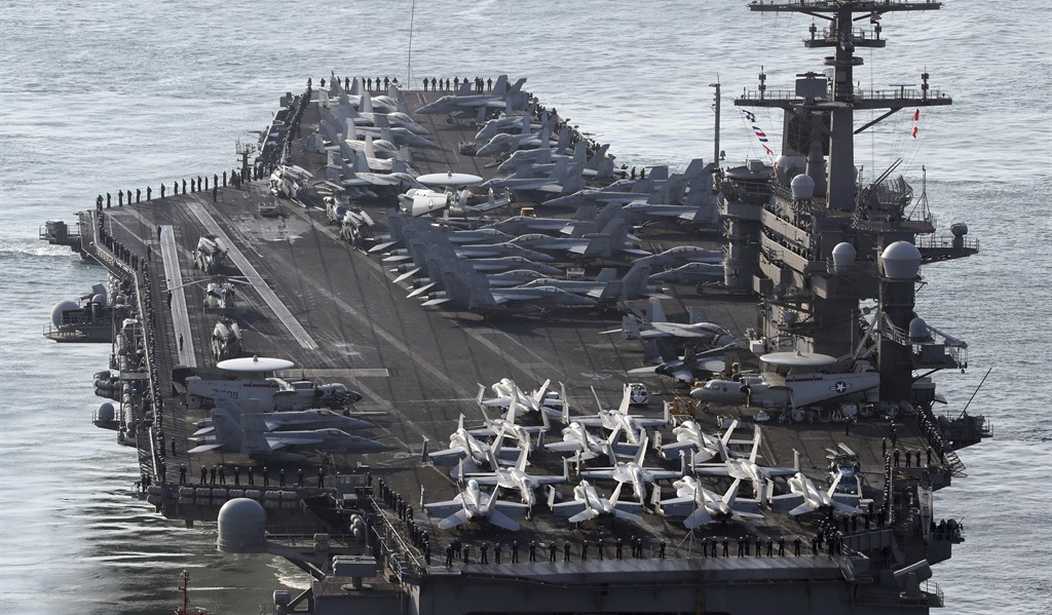North Korea's Kim regime knows the history. In 1981, Israeli fighter-bombers attacked and destroyed Iraq's Osirak nuclear reactor and support facility. Osirak was the critical facility in Saddam Hussein's nuclear weapons production program.
At the time, military analysts estimated the air strike delayed Saddam's nuclear quest by 10 to 15 years. Had Saddam possessed nuclear weapon when he invaded Kuwait in 1990, Operation Desert Storm may have had a different outcome.
The attack didn't end Saddam's nuclear quest. He still wanted the weapons, to "burn Israel," as he said in several speeches.
Battle damage Iraq suffered during Desert Storm and subsequent U.N. weapons sanctions denied Saddam the resources to develop a covert nuclear program. The 2003 U.S. invasion of Iraq ultimately terminated Saddam's thermo-nuclear dreams by terminating Saddam.
The Kim regime is also aware of that history.
However, North Korea in 2017 is not the equivalent of Iraq in 1981. The North Korean nuclear weapons program is far more advanced. In a March 2017 interview with The Independent Journal Review, U.S. Secretary of State Rex Tillerson said, "the threat of North Korea is imminent. And it has reached a level that we are very concerned about the consequences of North Korea being allowed to continue on this progress it's been making on the development of both weapons and delivery systems."
Recommended
In 1981, Iraq had one primary nuclear weapons target. North Korea has multiple targets. Destroying North Korea's capabilities requires multiple, near-simultaneous and devastating preemptive strikes.
North Korea has gone to great lengths to protect its command and control facilities, nuclear weapons facilities and ballistic missiles. Its military command centers reside in hardened, buried bunkers. North Korea's aging Yongbyon reactor is on the surface and appears to be vulnerable to an Osirak-type strike, but other nuclear weapons facilities are hardened and many of those are also buried deep underground. The Punggye-ri Nuclear Test Facility has support buildings on the surface, but also sports three tunnel entrances.
Other hardened nuclear facilities are dispersed throughout the country. Some of them may be weapons storage sites. Geographic dispersal makes it difficult to determine which bunker, tunnel or cave hides a nuclear weapons cache.
In 1981, Iraq couldn't respond in kind to the Israeli preemptive strike with its own conventional counter-strike. Saddam's options were limited. At best, he could support terrorist strikes on Israel and Israeli interests.
The North Korea of Kim Jong Un has options. We know it has a few ballistic missiles on mobile tractor-erector launchers that are hidden in tunnels. If they survive a preemptive attack, they could exit the tunnel and launch a warhead at Tokyo.
Given the destructive effects of conventional artillery and bombs, North Korea doesn't need a nuke or a ballistic missile to wreak havoc on Seoul, South Korea's capital.
Seoul's northern suburbs are within range of North Korean tube and rocket artillery stationed on the northern side of Korea's Demilitarized Zone. Seoul's southern suburbs lie within the range fan of North Korean FROG-7 type battlefield rockets. A North Korean fighter-bomber, flying south from North Korean airspace, will be over Seoul in two minutes.
Damaging Seoul is a blow to the 21st century's linked economies. Ironically, these linked economies explain, in part, why the U.S. regards a North Korean attack on South Korea and Japan as an attack on America.
The U.S. and its allies have the delivery systems and weapons to conduct a "Super Osirak" strike that would end North Korea's nuclear weapons threat. USAF B-1, B-2 and B-52 bombers are potent platforms.
But it would be a very difficult operation. North Korean artillery on the DMZ would have to be suppressed, and that would entail action by South Korean ground forces. Suddenly a preemptive strike looks like preemptive war.
























Join the conversation as a VIP Member